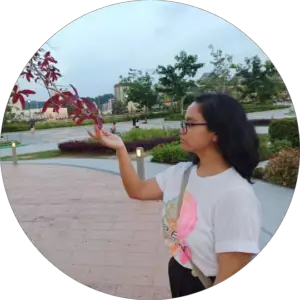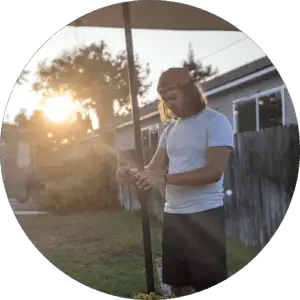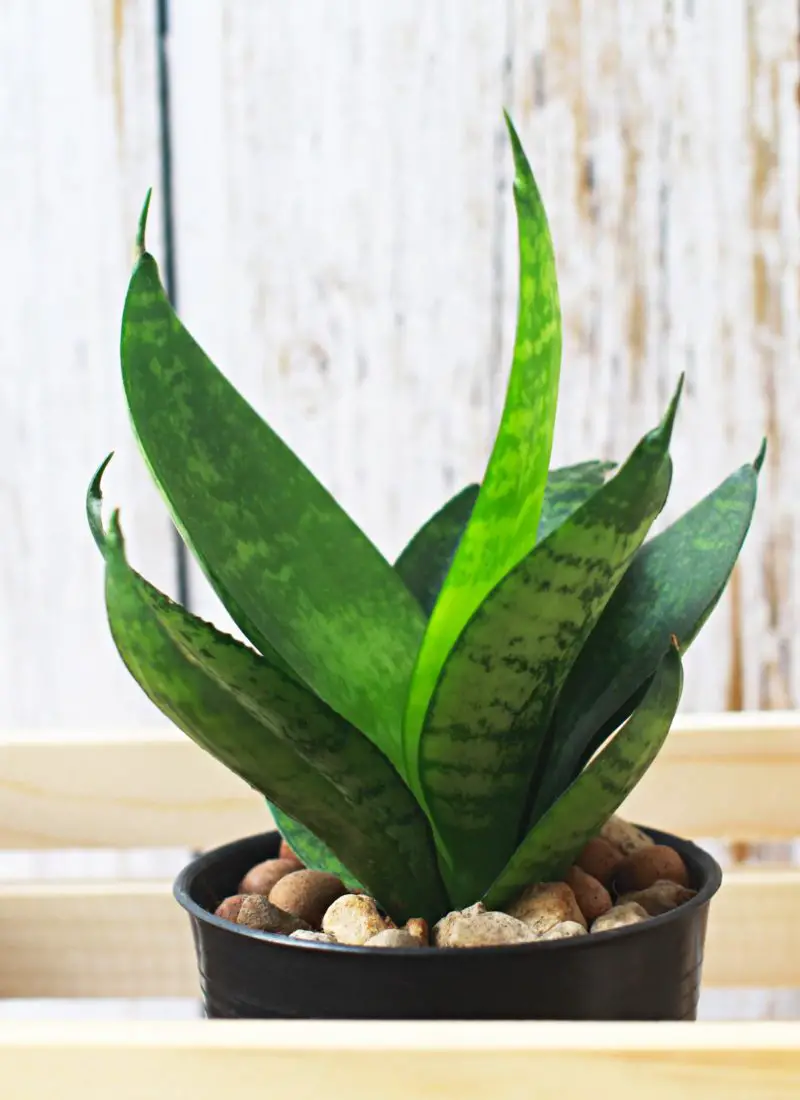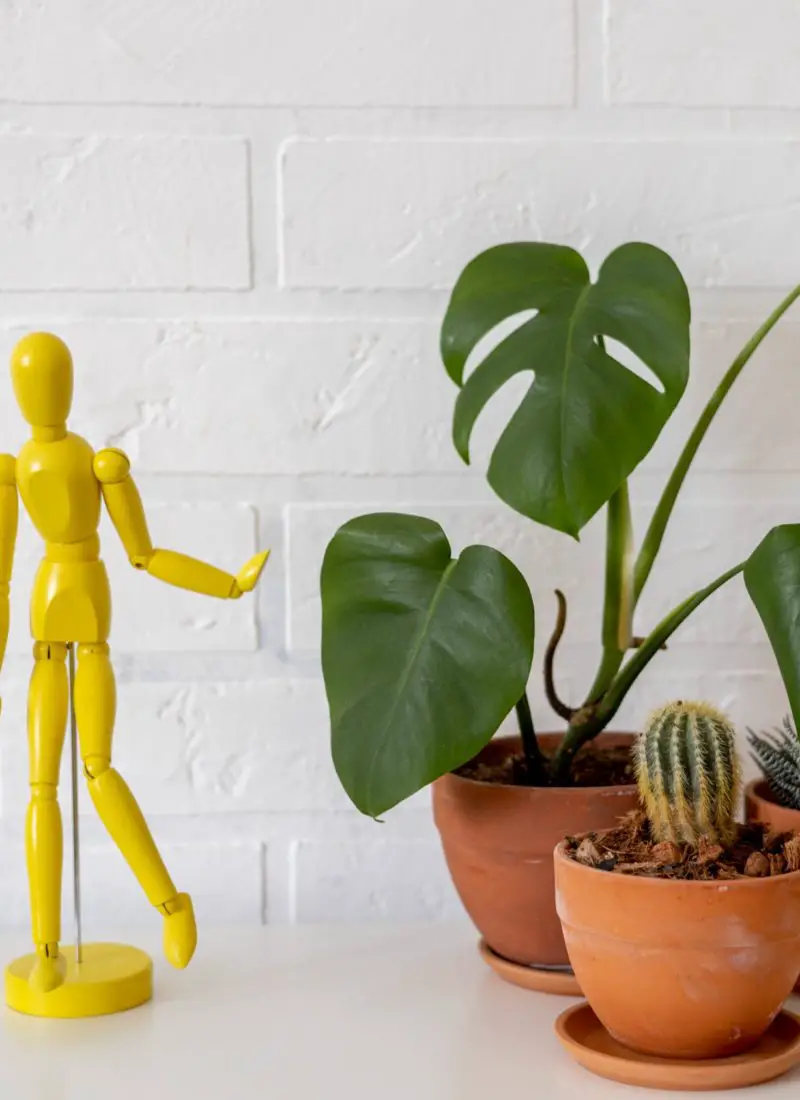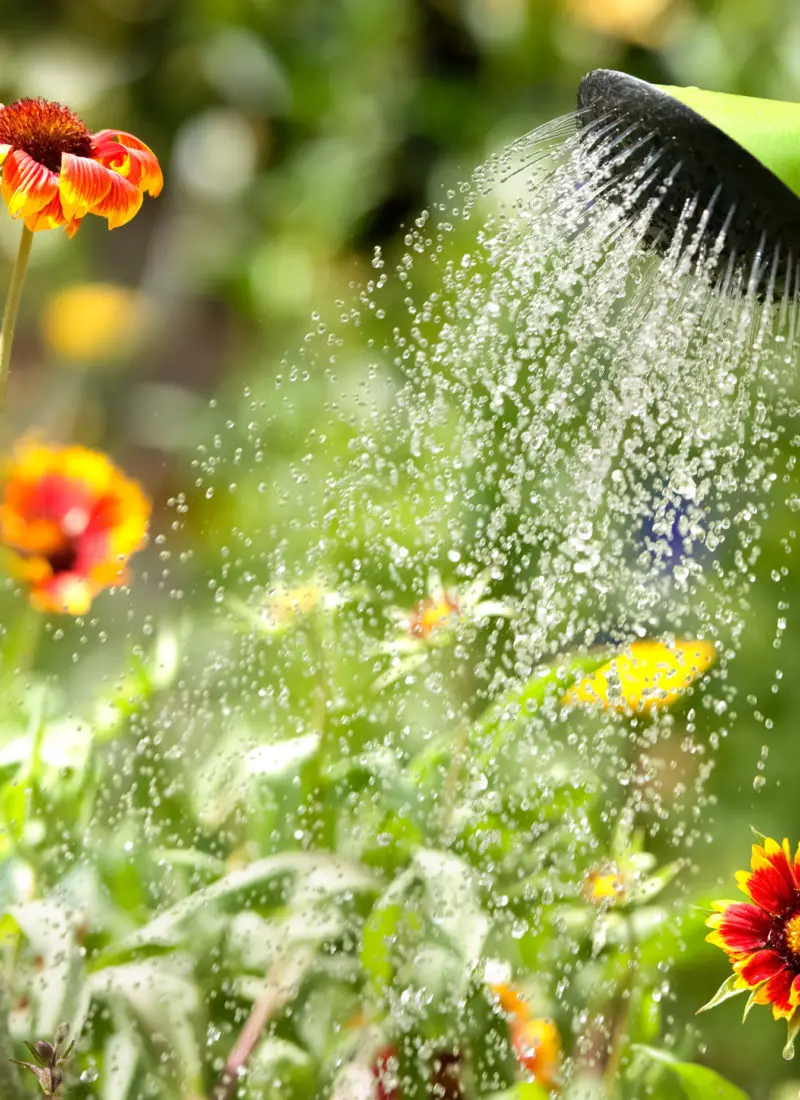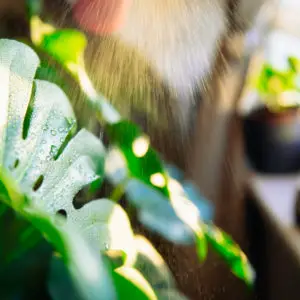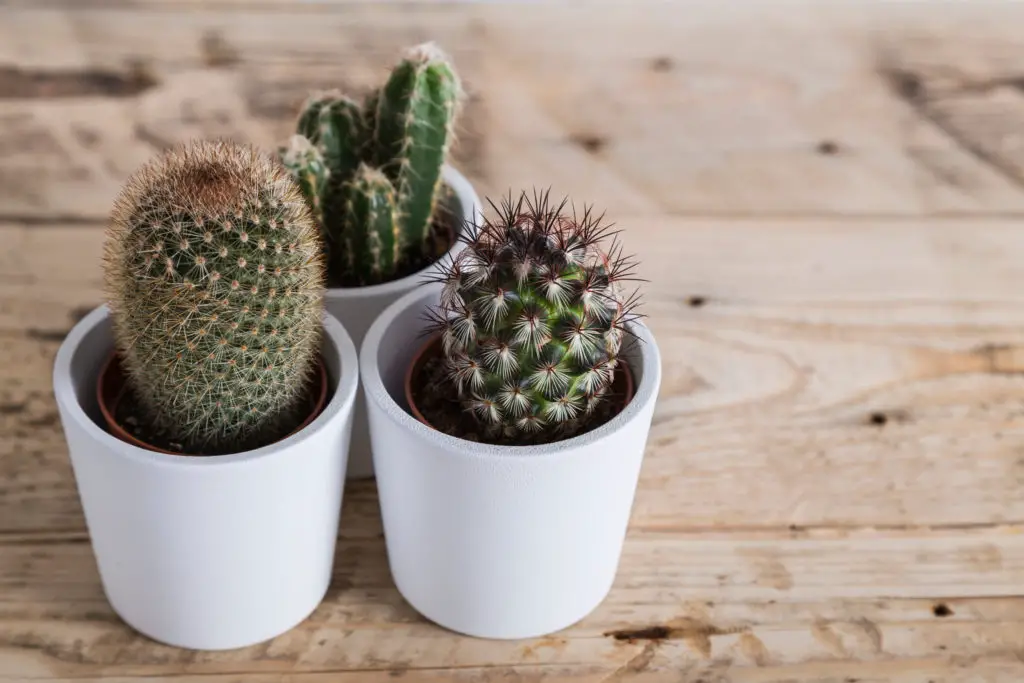
The trouble with decorative pots is they often don’t come with drain holes. As any experienced plant owner knows, this is a drainage disaster/root rot waiting to happen! But this is where double-potting comes in handy. What is it, you ask?
Double potting is placing a potted plant inside a larger, decorative pot. The inner pot is often taken out for watering to prevent stagnant water in the outer pot. It’s used as an aesthetic feature but also to postpone the repotting process so the plant acclimatizes to its new surroundings first.
Below, I go over the steps for double potting, some helpful tips, and the benefits of double potting for both you and your plants. If you’d like to look at some other options for potting plants (upcycling) take a look at:
12 Design Ideas for Decorating Your Home with Houseplants
(As an Amazon Associate, I earn from qualifying purchases.)
Table of contents
How Do You Double Pot Plants?
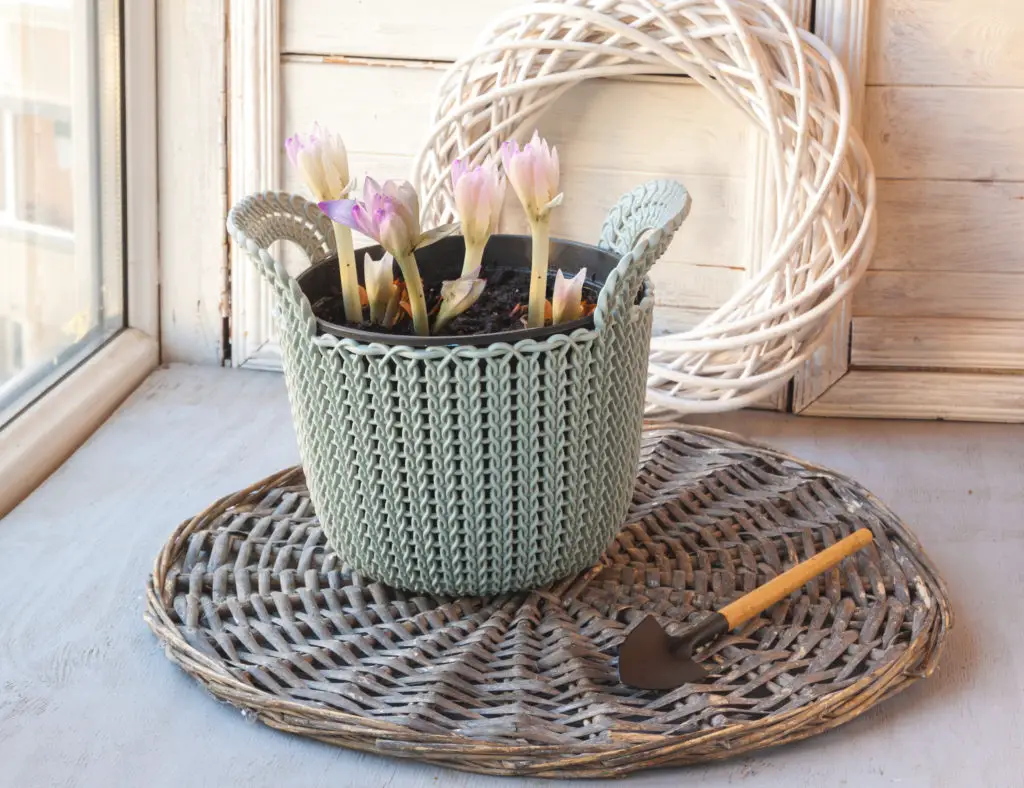
Double potting plants is straightforward; it’s in the name itself. All you have to do is place your plant in its grower pot into your designated decorative pot, i.e., cache pot, and that’s it! But sometimes, people add the following as well:
- Place a layer of rock gravel in the outer pot. This technique helps elevate the grower pot so it isn’t way below the outer pot’s rim. If your plant is looking like it is wearing a brother’s hand-me-downs, grab some gravel, and keep adding it to the outside pot until the soil in the smaller pot is just below level with the bigger pot’s rim. Note: Do not depend on this gravel layer to keep excess water away from the inner pot as it is hard to see where the water level is unless you take out the inner pot to check every time you water (which can be hard with bigger plants/pots. Also standing water will attract mosquitoes so try not to over water if only for that reason. Either err on the side of underwatering until you figure out the right quantity of water for the plants watering schedule or… Use an in-pot moisture meter, this will make your life so much easier, I promise, I own one and it has saved me from unaliving/over-watering multiple plants. The one I linked is the one I use and it has a bunch of great reviews – 4.5 Stars/26,426 reviews in fact.
- Add mulch such as sphagnum moss or pebbles over the top soil. Mulching is beneficial for retaining moisture, so you don’t have to water as often. But it also acts as an ornamental cover to sneakily hide the fact you’re double-potting.
- Add damp sphagnum moss between the grower and cache pot’s spaces. This method is an extra step to keep your plant’s roots insulated from fluctuating temperatures, especially if you live in cold regions. It’s also beneficial in keeping moisture in when using porous pots such as unglazed ceramic and terracotta. I’d recommend getting the Exo Terra Forest Plume Moss on Amazon. It’s typically used for reptile and amphibian pet beddings, but it also works wonderfully for plants, as some buyers have lauded.
These are just some of the extra lengths people go to when double potting their plants. You’re welcome to try them out, but otherwise, you’re fine with just the basic method.
Helpful Tips for Double Potting Plants
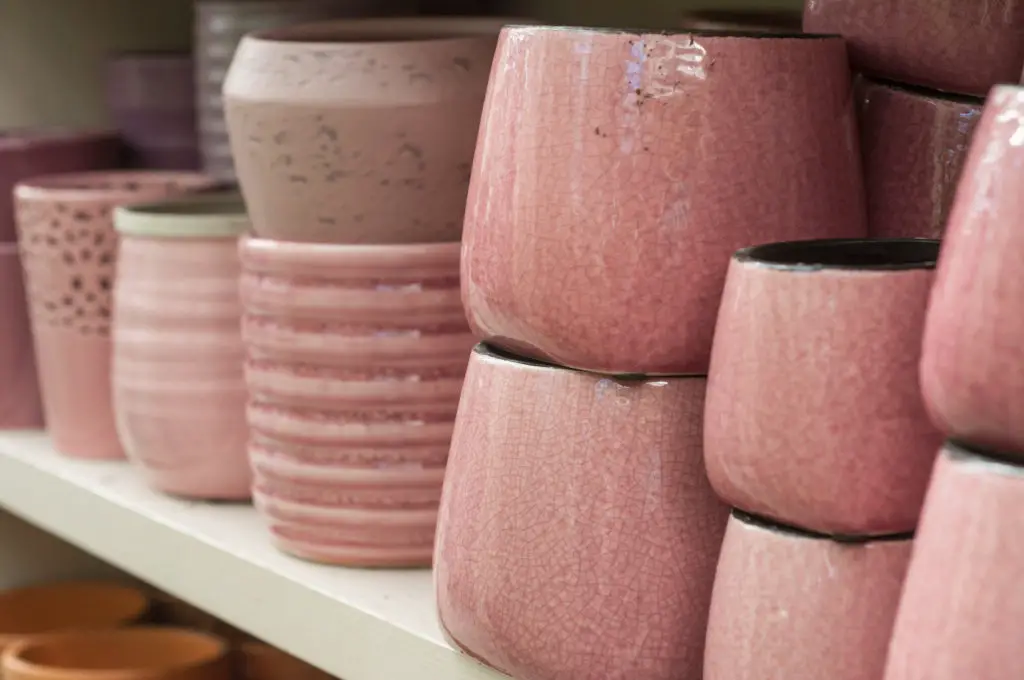
If you feel like giving double potting a go, here are a few things to keep in mind:
- Choose pot typesbased on your plant’s moisture preference. For example:
- Drought-tolerant plants like succulents prefer when their soil dries out completely before its next watering. So they will do well in terracotta pots because it’s porous and allows water to evaporate more quickly.
- Moisture-loving plants such as Calatheas like it better when their soil is constantly damp. Using plastic or glass containers will be more beneficial for retaining moisture longer.
- Place plastic liners in baskets or wooden cache pots. This ensures moisture won’t get on the material that can cause them to rot and break apart too soon.
- Put a saucer underneath the outer pot if it has drain holes. Sometimes you’ll luck out and the designer pot will have proper drainage, making it easier to water your plants without removing the grower pot. This is only advisable if you don’t mind your cache pot staining from unused fertilizer salts. If the outside of the pot is porous and you don’t want stains then try to find a surface you don’t mind getting wet or stained and put it on there without the saucer to avoid staining the pot. Or, try a pebble tray. If you want to learn how to make one, click here to go to our article on pebble trays.
- Take the grower pot out for watering to prevent excess water from accumulating in the outer container. It’s helpful to do this in the sink, where you can give the plant a thorough soak before leaving it to drain for a good hour. Once it’s done, you can place it back in its cache pot.
What Are the Benefits of Double Potting?
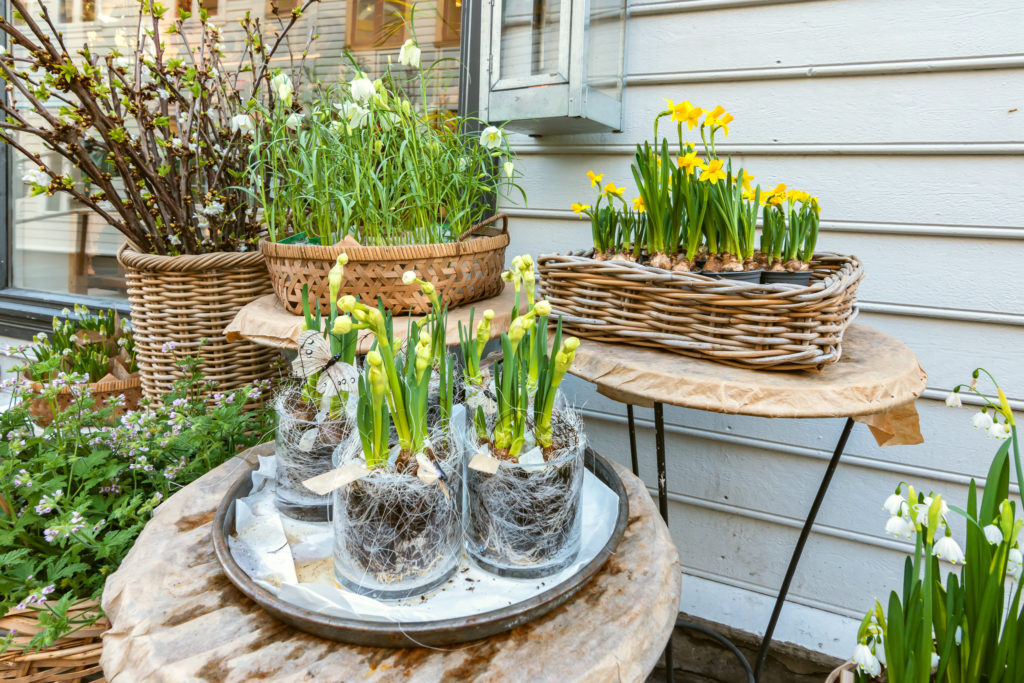
There are several reasons why double potting can be good for you and your plants:
- It helps retain moisture longer. The soil will remain damp from the extra pot layer for some time, so you’ll likely water your plants less frequently. However, I’d recommend checking the soil once or twice a week, just in case. You can do the knuckle test or use a moisture meter (Amazon link) to be absolutely sure. I actually found myself depending heavily on the latter and managed to prevent several overwatering mistakes. Even with over 100 plants in my keep, I still get the watering wrong every now and then. Hey, nobody’s perfect. So I highly recommend getting yourself one.
- It minimizes cold or hot damage by insulating the plant’s roots from extreme temperatures. It’s particularly convenient for tropical houseplants because they are sensitive to cooler temperatures. You can also do this outdoors – simply plant a pot underground, slide your plant in its grower pot inside, cover it with mulch, and voila! The surrounding soil’s temperature remains constant throughout the winter, making this a viable method to overwinter your plants. You can read more about taking care of your plants in winter in the following articles:
- It prevents invasive roots from spreading and overtaking other plants. This is more applicable to outdoor, in-ground double potting. For example, mint is notorious for choking out herbs in the same garden space, almost like a weed. Restricting it to a pot underground and cutting off any trailing stems will keep it from competing with other plants in the vicinity.
- It allows easier seasonal change of pots without repotting or damaging them. Some cache pots may not be suitable for planting or may crack and stain when exposed to moisture and soil. Hence, this becomes your better alternative to making your container last longer. Also, as mentioned in the introduction, double potting is suitable for temporary potting. The purchased plant is already dealing with many changes, and repotting will just stress it out further. If you don’t like the current pot’s look, hide it away in another pot. Done and done!
Do plants need to be double potted?
As a general rule, double potting is ideal for postponing the repotting process and allows the plant to get used to its new surroundings. It ensures the plant is in a healthy condition and helps the plant better recover from repotting and prevent transplant shock. Otherwise, it is unnecessary for established plants and generally deemed more of an aesthetic preference.
Final Words
Double potting is a valuable gardening technique to better care for your indoor and outdoor plants. Even if you don’t care about the plant’s benefit it is, at the very least, an aesthetically pleasing way to pot plants that is also incredibly functional for weekly waterings as well as useful for keeping the more expensive designer pots looking newer, longer. Happy planting!
References:
https://web.extension.illinois.edu/containergardening/choosing_drainage.cfm
http://www.ladybug.uconn.edu/FactSheets/houseplant-watering-recommendations.php
https://planttalk.colostate.edu/topics/houseplants/1315-houseplants-containers/
https://hgic.clemson.edu/factsheet/indoor-plants-cleaning-fertilizing-containers-light-requirements/
https://content.ces.ncsu.edu/extension-gardener-handbook/18-plants-grown-in-containers
